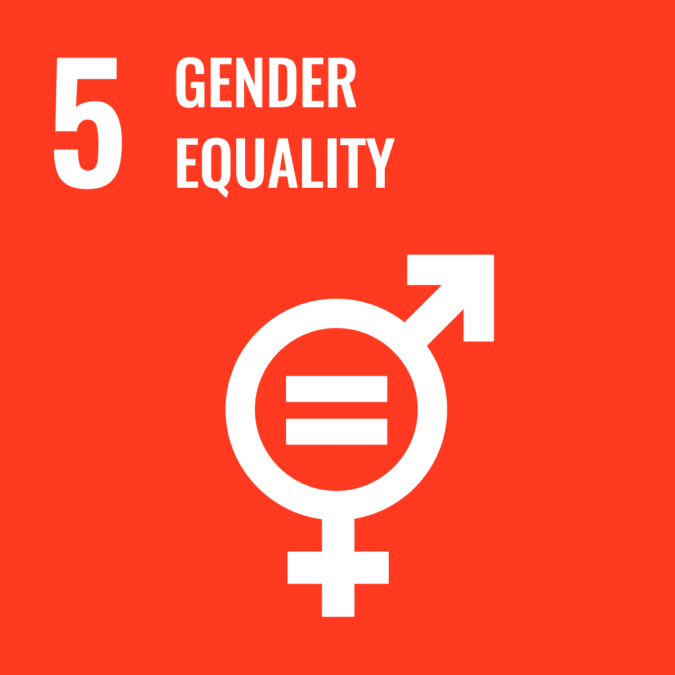
SDGs by 2030 – are we on track?
Inserting a gender lens into the public eye
Public transport is a feminist issue. So is parking. So are holidays.
Public transport systems are designed for “a-to-b” commuters, people travelling from home to work and back. That is not how people with unpaid caregiving demands, which are still mostly shouldered by women in most societies, need to travel. They need to ping between work, school, the supermarket, pick up from music practice, drop someone at sport, maybe undertake some elder care and then back home.
In Australia, full-time workers are entitled to 4 weeks of annual leave per year; in most states, school holidays run for 12 weeks. Even in a two-parent household, how is that supposed to work?
The gendered nature of how we live and work is not embedded in the design of our systems, whether that’s public transport, the retirement system, or school hours: all are designed without a gender lens.
If you were to get a group of people with caregiving responsibilities together to design an ideal public transport system, or to design the school holidays, it would not look like the current model. Because it’s not fit for purpose.
I research how the the design of work and workplaces impacts women’s careers. SDG 5’s bold ambition to achieve gender equality by 2030 requires a gender lens across all decisions, budgets and policy design at all levels of government and throughout business.

Achieving gender equality for women and girls is not just a fairness issue, it will provide a massive economic boost to a nation’s economy. Australia’s Women’s Economic Task Force showed $128 billion could be added to the national econmy if barriers were removed to women fully participating in the workforce.
Around the world, women are the economic engines propping up society.
Unpaid domestic work is fundamental to national economic productivity but is not counted or valued. This invisible labour is disproportionately undertaken by women, who also incur an economic cost for completing those tasks. Women don’t accrue superannuation for their time spent building Australia’s next workforce.
Australia has one of the world’s highest rates of educational attainment by women. Since 2020, women are more likely than men to attain a post-school qualification.
But while proportionally more women than men are employed in the labour force between the ages of 15 and 19, after this more men are active in the paid economy. During the critical childbearing years of 25-44 women’s participation lags males by around 10 percent.
Many of our systems and structures are built on the premise that men go to work and women stay at home.
Schools, workplaces and childcare centres are not operated to accommodate women’s full participation in the labour force. Such disconcordance perpetuates inequality. Our workplaces and public institutions are set up on a model that relies on the free and invisible labour of unpaid caregivers, still mostly women, meaning our community is not realising the important investment made in women’s education. At the same time, many men report a strong desire to be more actively involved in their children’s daily lives.
We need bold regulatory action to provide accountability around economic outcomes for women; to ensure that gender equity principles are embedded into decision making and budgeting policy design. Investing in universal child care, encouraging and supporting greater uptake of parental leave among fathers, and ensuring access to high quality flexible work for both men and women would be a good start. Achieving these goals will require regulation at the government level and practical support from organisations.
We need to be more radical in our thinking. We need to reimagine how all of the systems and structures that shape and support our lives could fully enable men and women to participate in work and care equally.

Sustainable Development Goal (SDG) targets addressed:
Target 5.1 End all forms of discrimination against all women and girls everywhere
Target 5.2 Eliminate all forms of violence against all women and girls in the public and private spheres, including trafficking and sexual and other types of exploitation
Target 5.4 Recognize and value unpaid care and domestic work through the provision of public services, infrastructure and social protection policies and the promotion of shared responsibility within the household and the family as nationally appropriate
Target 5.5 Ensure women’s full and effective participation and equal opportunities for leadership at all levels of decision-making in political, economic and public life
Resources
Pick a piece of public policy, and perform a gender impact analysis on it. Examples might include public transport, superannuation.
Articles
- Halais, F. 2020. Making Public Transit Fairer to Women Demands Way More Data
- Krause, H. 2023. ‘The school holidays are too long and a logistical nightmare – and I’m exhausted’
Podcasts and videos
Websites
Meraiah is a Senior Lecturer at the University of Sydney Business School and a member of the Australian Centre for Gender Equality and Inclusion at Work. Her research centres on gender, work, and organisations.
Share
We believe in open and honest access to knowledge. We use a Creative Commons Attribution NoDerivatives licence for our articles and podcasts, so you can republish them for free, online or in print.



